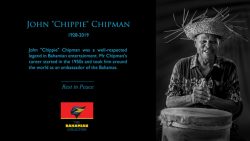This is a major breakthrough that should be noted by stakeholders and governments.
FAO GETS DUPONT’S AID IN FIGHTING AI
The United Nations Food and Agriculture Organization (FAO) has asked DuPont to provide initial supplies of its DuPont Virkon S veterinary disinfectant to meet the short-term needs of 69 nations in Eastern Europe, the Middle East and Africa as a precautionary measure to help governments and farmers prevent avian flu from spreading.
Virkon S, in several FAO reference laboratories, has demonstrated effectiveness against bird flu viruses and other disease agents of international importance.
Independent tests done by the Harbin Veterinary Research Institute in China have confirmed that, when used properly, Virkon S is an effective agent in disarming the H5N1 avian influenza virus, according to a news release.
Virkon S works as a preventive measure, making livestock areas more sanitary and helping to prevent avian influenza from spreading.
The cornerstone of Emergency Disease Control preparation must be to maintain a heightened state of vigilance against avian influenza, said Stephen Lister, a European veterinarian and biosecurity expert, in the release. Control protocols for this highly contagious disease should be based on sound and effective continuous biosecurity measures, using a disinfectant independently proven effective against the H5N1 avian influenza virus.
Effective Emergency Disease Control strategies must be a priority for governments and poultry producers internationally.
Virkon S was used during the last outbreak in 2003 and has since become part of many countries defense strategies.
DuPont Animal Health Solutions and partners are working to provide biosecurity training worldwide by informing farm staff, veterinarians and government officials of key control measures to minimize the spread of bird flu in the future.
Some of these procedures include farm vehicle disinfection, farm border controls and rigorous disinfection measures.
DuPont has also developed a series of products ranging from protective apparel to personal disinfectant to help prevent the spread of bird flu from handling of contaminated animals.
Sunday 21 May, more than 760.000 people in 118 countries and 420 locations, across 24 time zones, participated in Fight Hunger: Walk the World. All around the globe, people came out in force to deliver a message: child hunger has no place in this world and citizens working together can root it out.
The United Nations World Food Programme (WFP), its humanitarian and corporate partners, political leaders, artists and sport champions, as well as war-displaced families and over 100,000 school children in sub-Saharan Africa alone, stepped forward in fight against child hunger.
From Auckland New Zealand, to Pacific Ocean island of Samoa, people rose up to declare it is unacceptable that 18,000 children die of hunger daily on a planet that produces more than enough to feed every inhabitant.
International capitals, rural communities, neighborhoods and historical landmarks served as the backdrop to walks, which varied in size and style. In northern Uganda alone, on a hot and sunny day, more than 100,000 displaced civilians living in camps participated in the Walk.
The downpour in London could have caused some problems for Walk the World, but there was no stopping committed walkers led by Princess Haya of Dubai, WFP Goodwill Ambassador.
In the Bolivian capital, La Paz, two brothers were reunited after having been separated for six years. Both are being fed by two separate school feeding programs administered by WFP. Participants in Lesotho had a wonderful time during the 11km Walk in Maseru, which was led by the country’s Hon. Queen ‘MaSenate Mohato Bereng Seeiso. The President of Liberia Ellen Johnson Sirleaf was at the head of a 30,000-strong crowd through Monrovia that ended in the City Stadium.
In Indonesia, a world champion swimmer set a new world record on behalf of Walk the World by crossing the treacherous Bali straits while other supporters of ending child hunger were planting Walk the World: Fight Hunger flags at Mount Everest and Kilimanjaro summits.
The call to end child hunger was heard in Red Square in Moscow, on The Great Wall of China, in the historic centres of Budapest and Prague, in the old cities of Amman and Cairo, and in hundreds of other locations in all continents around the globe.
And in his special Sunday morning address, participants around the world were encouraged when Pope Benedict XVI expressed his support for the Fight Hunger: Walk the World initiative to end child hunger by 2015.
“If we ignore child hunger, it remains a daily reality that ravages millions and goes unseen by most. We are bringing this otherwise invisible problem into the spotlight and moving citizens and governments to action,” said Arlene Mitchell, WFP Director of Walk the World.
“There is no excuse for children to be chronically hungry, day in and day out in the 21stcentury. The world community still has to make a huge progress in order to improve the lives of children. Fight Hunger: Walk the World makes a step forward on the path.”
“The event, initiated three years ago by TNT, global provider of express, mail and logistics services, aims to engage citizens worldwide, throughout the next decade to achieve the Millennium Development Goal of halving the proportion of hungry people globally by 2015,” said Mitchell. “Without citizen action, the status quo will remain. But with it, the world can help to end the unnecessary suffering of children.”
The cash raised through the walk (the final tally is being calculated) will fund two successful global activities aimed at reducing child hunger: projects to help pregnant and lactating women and young children and school feeding projects which provide food for school students in developing countries.
Last year, WFP provided school meals for 21.7 million children in 74 countries. The Programme plans to reach 50 million school children by 2008. All too often pupils particularly girls are deprived of education because their families cannot afford to send them to school. Yet educating girls is one of the best ways of permanently escaping the vicious cycle of poverty, illiteracy, poor health and hunger.
The Bahama Journal



